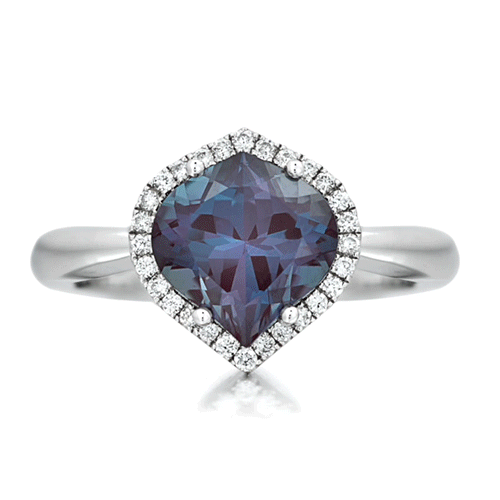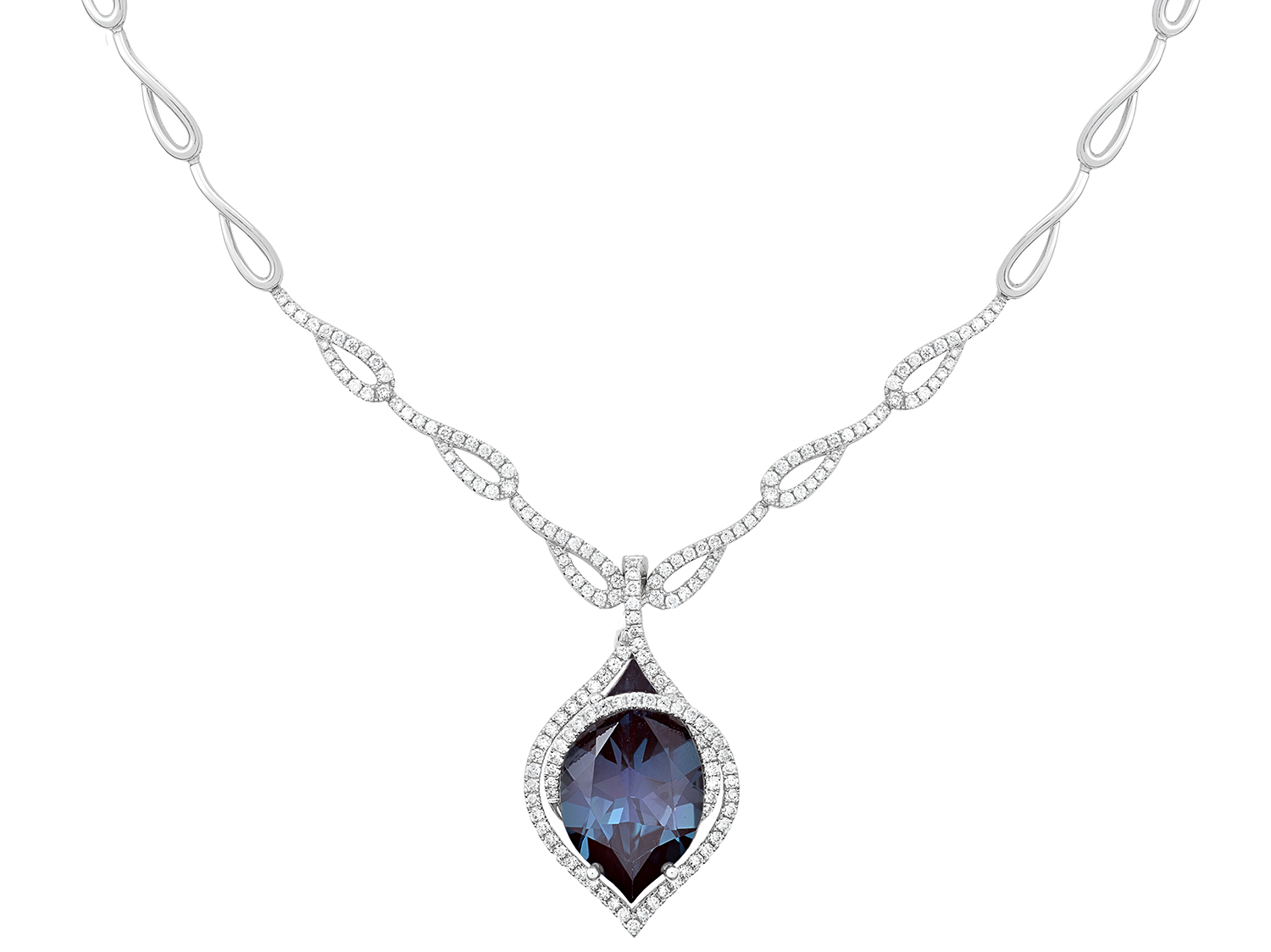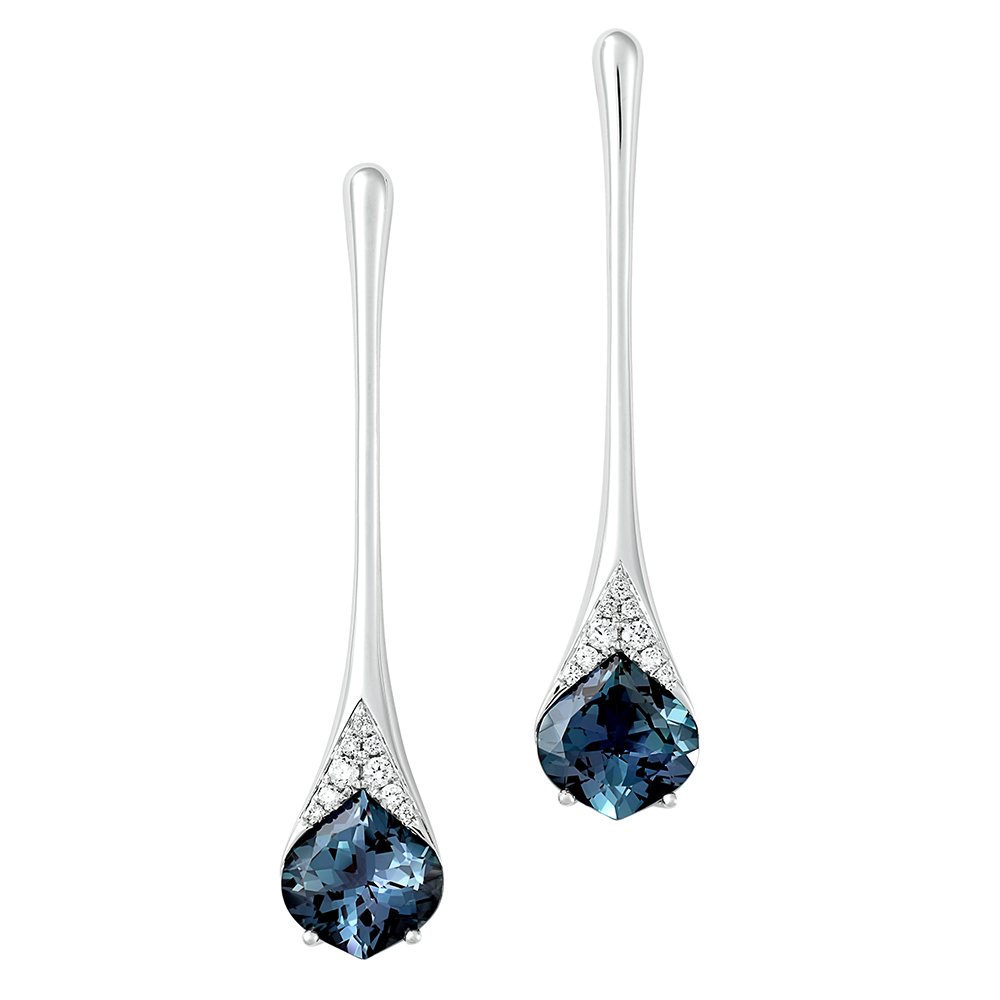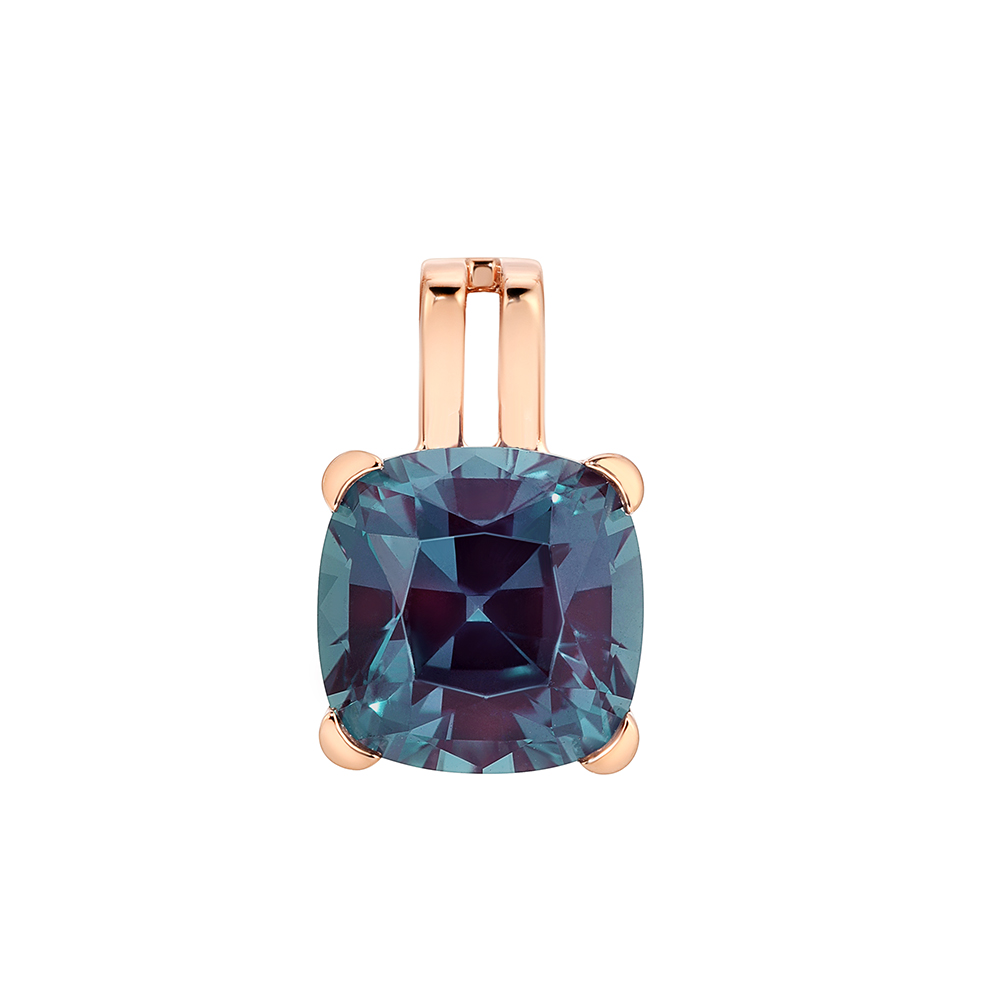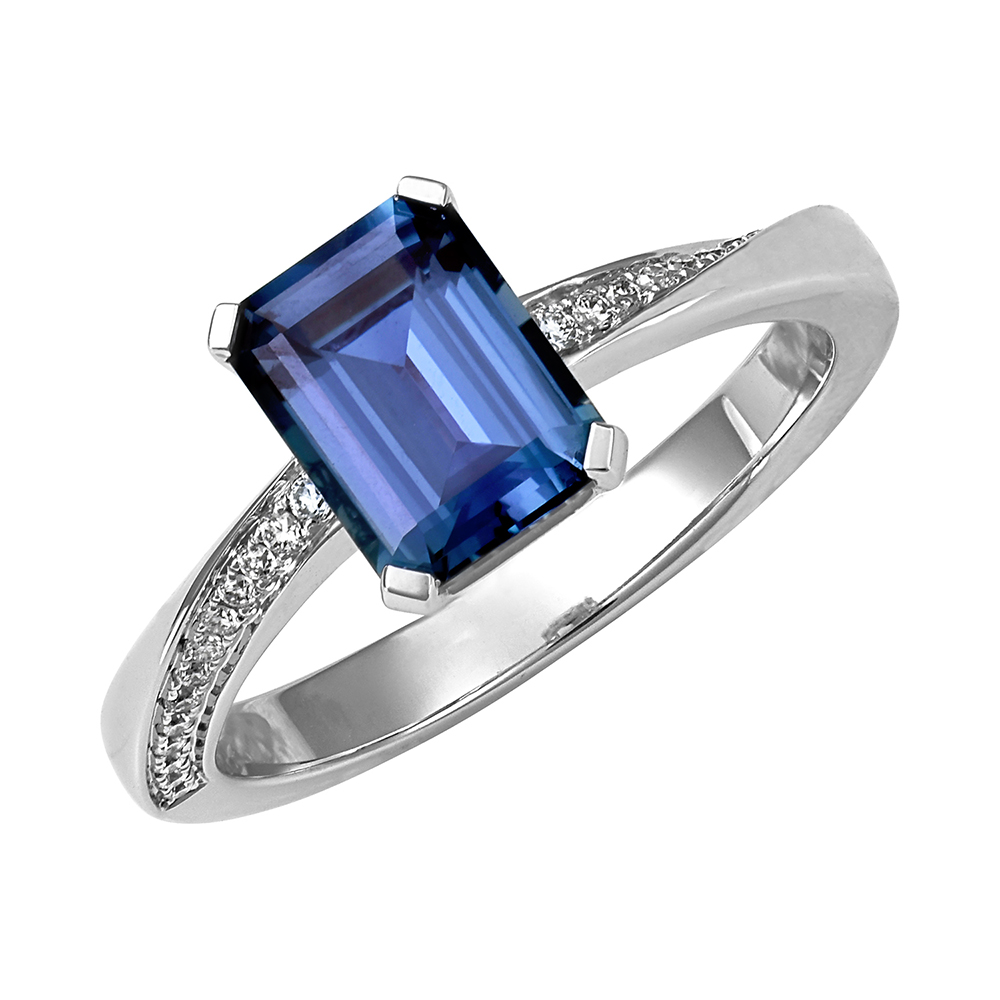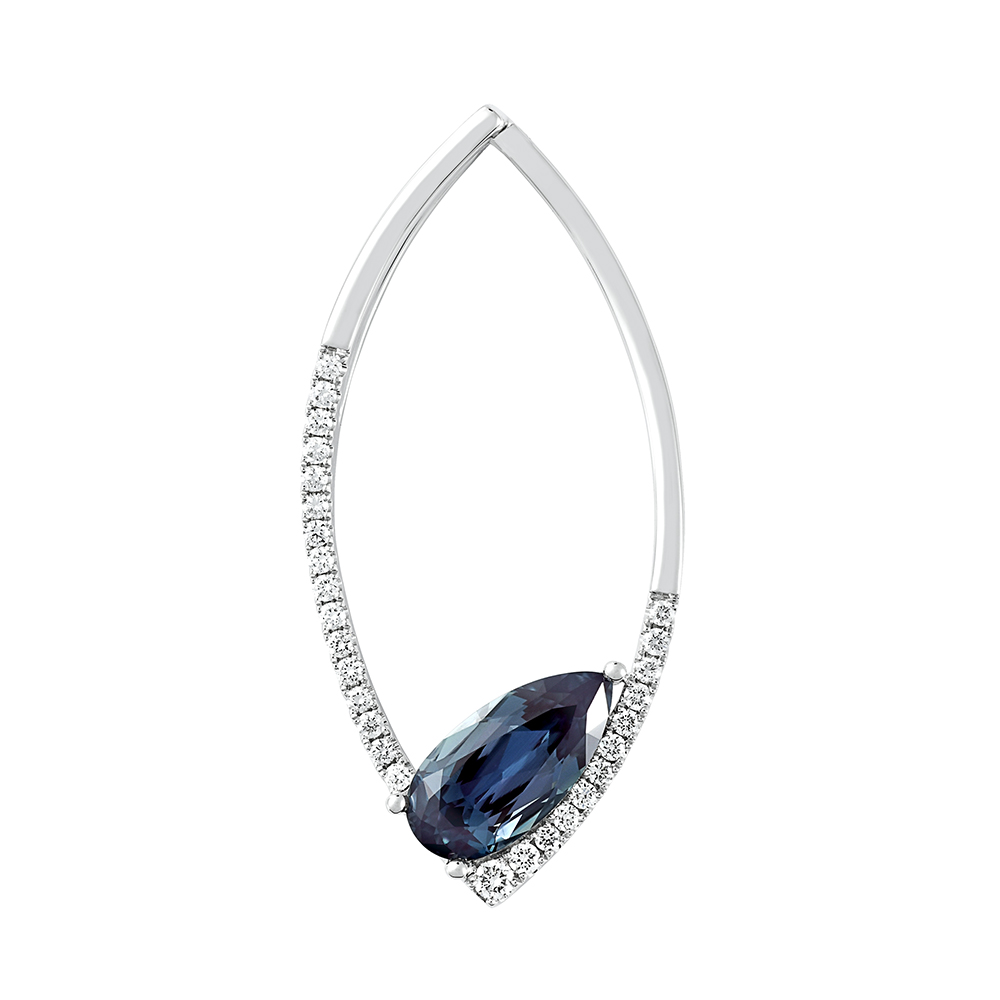Alexandrite
The most famous color-changing gem, alexandrite, turns teal when the sun shines on it and then red by the glow of candlelight. Chatham grows alexandrite crystals over a period of months in our controlled laboratory environment. We’re excited to bring these rare and costly gems to those who have always wanted one.
Give Alexandrite as . . .
The June birthstone
The 45th & 55th anniversary gem
The astral gem for Gemini & Ares
An engagement ring stone since it’s durable with a 8.5 hardness
A symbol of her adventurous and creative spirit
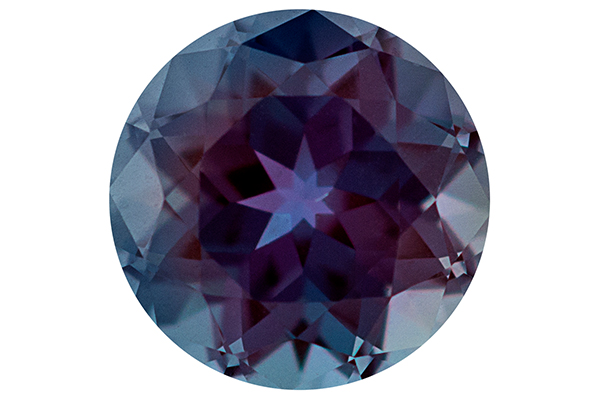

Chatham Lab Grown Alexandrite
Since alexandrite was discovered in an emerald mine and Chatham has experience growing emeralds, we wanted to grow alexandrite crystals as well. However, alexandrite proved so difficult to grow that it took us several years of experimenting to perfect the process. Grown with an earth-mined seed of Russian alexandrite, our Chatham lab grown alexandrites are very close to the Russian ideal. We make sure that they exhibit dramatic color change by adding a lot of chromium to the growing environment.
Due to the rarity of mined alexandrites, they were nearly always cut in an oval shape to preserve carat weight. At Chatham, we cut away 80% of the rough for maximum clarity and intense color change. Our expert stone cutters cut a full range of shapes in alexandrite, permitting the latest jewelry fashions to feature this unique gem.
Our lab grown alexandrite is the famous color-change chrysoberyl variety with the exact same physical, chemical and gemological characteristics as mined gems. Some suppliers sell what they call “lab grown alexandrite,” but it is actually a chemically treated color-change synthetic sapphire. It has only a slight color change from blue to purple and doesn’t look like a real alexandrite. If an “alexandrite” doesn’t change from green to red, you’ll know that it is just an inexpensive imitation. Unfortunately, people unknowingly buy these imposters from eBay and miss out on seeing the magic of genuine alexandrite.
About Alexandrites
Emerald by day. Ruby by night. As the most famous variety of the beautiful and rare chrysoberyl mineral group, alexandrite changes from bluish green in daylight to purplish red in incandescent light.
What makes an alexandrite change color? Chromium occurs in combination with iron in this spectacular gem to produce the dramatic color-change effect. Chromium is the same amazing trace element that makes rubies red and emeralds green, but in chrysoberyl it causes a broad absorption band in the middle of the color spectrum, around 580 nanometers. This leaves two transmission windows open, one in the red part of the spectrum and one in the green. In light rich with red wavelengths, the gem takes on a red hue, but it will appear green in bluer light. This magical transformation is known scientifically as the color-change phenomenon. But it’s also sometimes referred to as “the alexandrite effect.”
When emerald miners in Russia’s Ural Mountains first discovered alexandrite in 1830, they mistook it for an emerald. But, they realized that it was another gem entirely when they saw it by the glow of the fire. Alexandrite was named after Czar Alexander II because it matched the red and green of the Imperial Russian flag. The 19th century Russian alexandrites were of superb quality and exhibited vivid hues and intense color change. Today, most alexandrite comes from Sri Lanka, East Africa and Brazil, but many possess less precise color change and muddier hues. Its scarcity explains why alexandrite is so rare and valuable today.
